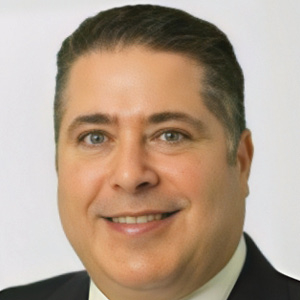The corporate legal landscape is in flux, and commercial litigation sits squarely at the center of that transformation. General Counsel are tightening their focus on spend, on outcomes, and on aligning litigation strategy with broader business goals. That sharper focus is redefining the expectations placed on outside counsel and reshaping the way commercial litigation is resourced, strategized, and delivered.
Gone are the days when commercial litigation was treated as a reactive necessity. Today, it’s a tool for managing enterprise risk, protecting market position, and even gaining competitive advantage. As business priorities evolve—driven by macroeconomic uncertainty, regulatory upheaval, and rising shareholder scrutiny—so too does the role of litigation in the corporate playbook.
The Intensified Quest for Value and Efficiency in Legal Spend
For general counsel, the word of the year is value. According to recent industry analyses, "value” was cited by GCs three times more often than the previous year, underscoring a sharp pivot in how legal departments evaluate outside counsel.
It's not just about outcomes alone anymore; it's about outcomes relative to cost. Corporate clients want legal services that are not only effective, but also efficient, predictable, and demonstrably worth the investment.
Nowhere is this pressure felt more acutely than in commercial litigation. High-stakes by nature and often sprawling in complexity, commercial disputes represent some of the most significant and volatile line items in a legal department’s budget.
As legal departments face mounting internal pressure to rein in costs, litigation is becoming the primary target for optimization. GCs are triaging matters more aggressively, consolidating work streams, and leveraging volume to negotiate better rates or alternative fee arrangements. The era of open-ended billing on large disputes is drawing to a close.
This isn’t a brand-new development, but the tone has shifted. The demand for value has become more insistent, and more quantifiable. GCs want to shed the cost center label once and for all, and that means building cases that make fiscal sense. The focus is on practical ROI: What does the company gain from this litigation, and at what price?
For law firm litigators, that means the traditional metrics of success—victory at trial, favorable settlement—are only part of the equation. Clients are scrutinizing how those outcomes are achieved and what it takes to get there. Efficient case management, transparent and proactive budgeting, and phase-based strategies are now table stakes.
Firms that can’t translate their work into measurable business value risk losing ground to those that can. This is the new calculus of client service, and it’s changing the way commercial litigation is practiced and priced.
Strategic Litigation Management
Litigation is rarely a welcome event for in-house legal teams. General counsel are not enthusiastic about waging lengthy courtroom battles, especially when weighed against the financial cost, reputational exposure, and operational distraction. Increasingly, their guiding principle is simple but impactful: Avoid-Defend-Resolve.
Avoid disputes when possible. Defend vigorously when necessary. Resolve efficiently when prudent.
That logic informs every decision about whether to escalate a conflict, settle it, or sidestep it altogether. And in commercial litigation, where the stakes are often high and the variables numerous, this strategic triage is driving real change in how litigation is managed and resourced.
One key component is selectivity. GCs are applying materiality thresholds to determine whether a dispute is worth litigating at all. If a matter doesn’t meet that threshold, it’s unlikely to proceed to full-blown litigation. Risk management now involves more front-end effort: training business units to avoid disputes in the first place, setting up early warning systems, and developing protocols to resolve conflict before it escalates.
For commercial litigators, this shift means firms are no longer being hired solely to fight. They’re being brought in to help clients stay out of the courtroom—or get out of it quickly. That requires a broader toolkit: pre-litigation counseling, early case assessment, realistic scenario modeling, and resolution pathways that align with the client’s business risk tolerance.
Simply preparing for trial, no matter how strong the legal theory, may not be aligned with what the client actually wants. Law firms must adjust by offering advice that’s not just legally sound but strategically relevant. This means factoring in reputational concerns, business continuity, and the downstream cost of protracted disputes.
Commercial litigators who can operate within this Avoid-Defend-Resolve framework—proactively, strategically, and cost-effectively—are positioning themselves as indispensable business partners, not just legal service providers.
Evolving Service Delivery
The legal service delivery model is no longer a binary choice between in-house teams and outside firms. General Counsel are strategically reallocating work across a broader ecosystem—and increasingly, that includes Alternative Legal Service Providers (ALSPs).
While high-stakes cases still demand the deep expertise and courtroom track record of traditional firms, more routine components of litigation are being peeled off and redirected. Tasks like document review, regulatory compliance analysis, and legal research are prime candidates for reallocation to ALSPs, who often deliver them faster and at a lower cost.
Many ALSPs are actively expanding their capabilities into matter-specific services and legal managed services. That means they’re no longer just handling the overflow or the mundane. They’re positioning themselves to own defined slices of litigation work, including discovery, e-discovery, early case assessments, and even settlement support.
The question for commercial litigation firms isn’t whether ALSPs will encroach on litigation work—it’s which parts, and how firms should respond. Rather than compete on every front, litigators need to identify their high-value differentiators: trial strategy, complex motion practice, and nuanced legal analysis. These are areas where law firms still hold an edge and can command a premium.
Firms should be open to rethinking how they deliver services. That may mean building internal capabilities for more cost-efficient support, forming partnerships with ALSPs, or even exploring hybrid service models that integrate external providers into a seamless litigation workflow. Clients are clearly willing to unbundle services to meet budgetary and efficiency goals. Firms that understand this—and adapt accordingly—will be better positioned to retain litigation work in an increasingly segmented marketplace.
Alternative Fee Arrangements
Billing is no longer just a back-office function—it’s a strategic issue, and one that is increasingly shaping how commercial litigation is bought and sold. While hourly billing still dominates the market—accounting for 77% of matters—a full 61% of General Counsel say increasing the use of Alternative Fee Arrangements (AFAs) is now a medium or high priority. Law firms must move beyond the billable hour if they want to remain competitive.
This pressure is especially acute in commercial litigation. For GCs looking to better manage spend and demonstrate ROI to the C-suite, aligning fees with results is more attractive than ever. That doesn’t mean clients are abandoning the hourly model overnight, but it does mean they expect outside counsel to offer viable, value-based billing options.
For commercial litigators, the shift demands new capabilities. It’s not enough to discount fees reactively. Firms need robust cost prediction tools, historical matter analysis, and the ability to articulate how their pricing structures tie to outcomes. Even if shadow billing continues behind the scenes, clients want confidence that the proposed AFA is rooted in real data and can hold up under pressure.
This evolution in billing models is not about cutting prices—it’s about building trust. Clients want transparency, predictability, and a pricing approach that reflects the strategic nature of the dispute. Law firms that embrace this expectation and innovate accordingly will differentiate themselves in a marketplace that is growing more cost-conscious and performance-driven by the day.
The Demand for Practical, Commercially Attuned Advice
For general counsel, technically accurate legal advice isn’t enough. What they want—what they expect—is practical, business-oriented guidance that helps their company move forward, not just stay out of trouble. Legal analysis that’s correct but disconnected from operational realities is increasingly viewed as unhelpful at best, and as a liability at worst.
Commercial litigation clients aren’t just looking for an airtight legal argument. They want to know what it will mean for their business. Can they continue manufacturing without disruption? Will this litigation tie up critical resources? Could a public filing spook investors or customers? These are the questions driving litigation strategy today.
Litigators must go beyond black-letter law. They’re expected to understand their client’s market position, risk tolerance, and business goals, and then craft litigation strategies that reflect that context. Winning a motion that delays a case by six months may be a legal success, but if it derails a product launch or adds millions in holding costs, it’s not a business win.
Commercial litigators must act as strategic partners. GCs increasingly want lawyers who function as part of the business, not separate from it. That means adopting the mindset of the “Department of How” rather than the “Department of No”—solving problems, not just flagging them. Commercially attuned advice is actionable, realistic, and tailored to the client’s specific circumstances.
Underlying Drivers
Beneath every commercial litigation trend lies a shared foundation: rapid technological advancement and a shifting talent landscape. AI, data management, and cybersecurity are no longer peripheral concerns. They’re central to how legal departments operate and how they select outside counsel. GCs are increasing their technology budgets not for novelty’s sake, but to boost efficiency, enhance capacity, and stay ahead of complex risk.
In commercial litigation, this translates into rising expectations around how technology is used. AI-powered tools are transforming discovery, document review, and legal research, offering both cost savings and speed.
It’s not just about the tech, though. It’s about the people who know how to use it. GCs increasingly value adaptability, tech fluency, and strategic thinking in their internal and external teams. That means law firms need to prioritize not only technology investment, but also talent development, hiring and retaining litigators who can translate technical capabilities into business results.
Adapting for Future Success
Winning cases is no longer enough for commercial litigation firms. Outside counsel must demonstrate business alignment, cost control, and strategic insight.
Adapting means leaning into proactive risk mitigation, offering flexible and transparent pricing, and understanding where your firm fits within a broader, more complex service delivery model. It means embedding commercial awareness into every decision and embracing technology and talent that can deliver measurable results.
Firms that rise to meet these expectations will become indispensable partners in navigating the high-stakes, high-pressure landscape of business operations and commercial litigation. That’s where the future of litigation lies: not in resisting change, but in mastering it.






























